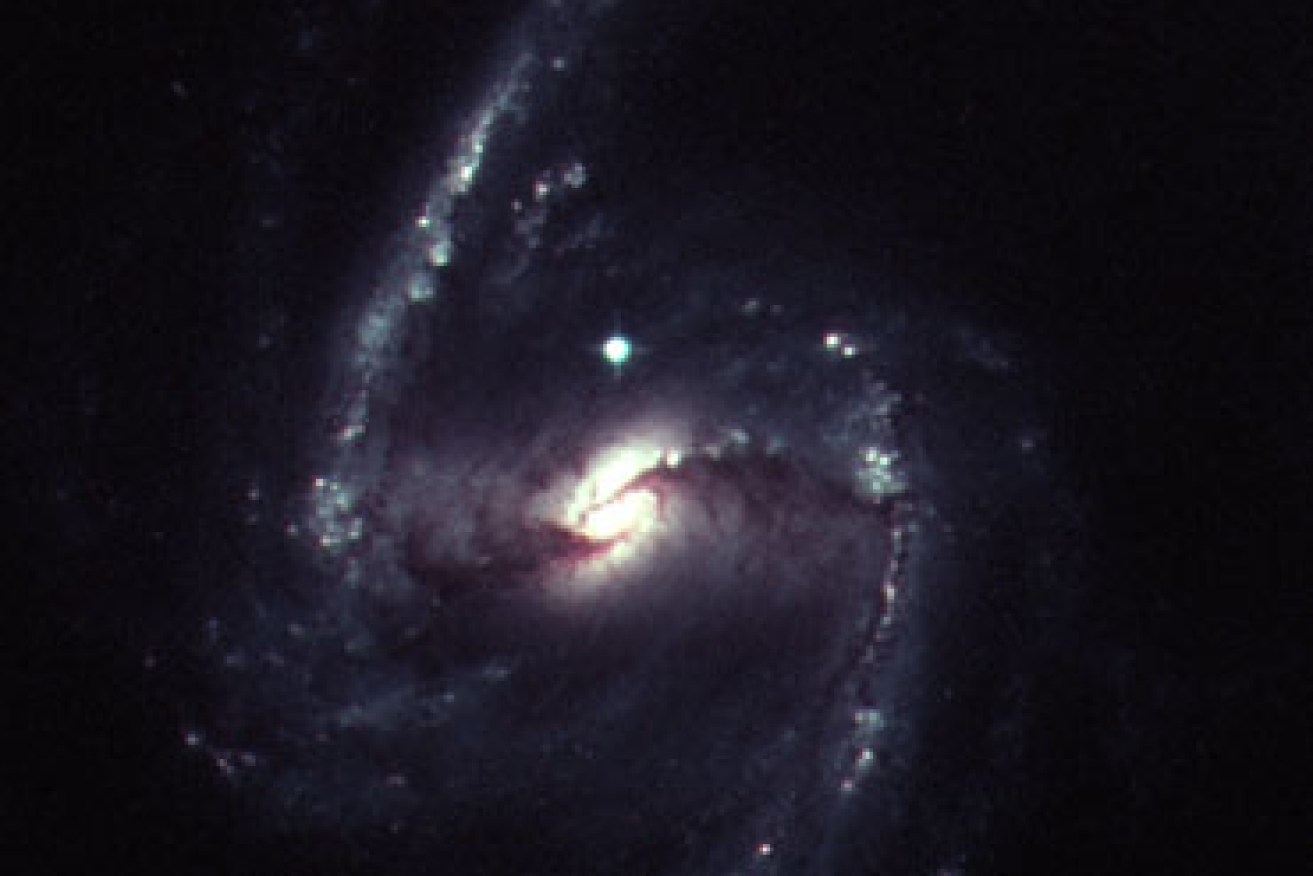Scientists witness moment star dies for first time


Pete Challis/High-Z SN Team, Hubble Space Telescope
The first moments of the death of a massive star have been observed by scientists for the first time.
The discovery was a breakthrough for researchers, with the visible supernova shockwave sent out as the star collapsed, confirming long-held scientific beliefs.
“It is quite unique to see how the end of a star gives birth to new stars, new planets and new life – all in a few minutes,” Australian National University astrophysicist Brad Tucker told The New Daily.
“It is really that quick. You blink, you miss it.”
• 10 great moments from Scott Kelly’s year in space
• The risk of giant comet hitting Earth increases
• US grandpa blasts off for rocket ride into space
He was part of a team monitoring 500 galaxies to catch the intense phenomenon, which would better allow scientists to understand the life cycle of stars.
They knew what they were looking for, but weren’t sure where or when it would happen, and Dr Tucker said they initially missed the vital information that confirmed their research.
“Roughly, a star blows up every 100 to 200 years in a galaxy so if you monitor a few hundred galaxies you should be able to find one to two supernovas a year,” Dr Tucker said.
“So we chose a bunch of galaxies and said hopefully when one goes off, we will catch it, and that is exactly what we did.”
See a NASA video animation of the exploding star below:
Dr Tucker described the process as similar to compressing a clump of dirt in your palm, squeezing it so tight, it couldn’t be compressed any more and your hand was flung away.
But in the star’s case, the dirt was a neutron star or black hole, and the hand was gravity squeezing it all together until the pressure was just too much and it collapsed in on itself.

Supernova shockwaves create heavy elements, like gold, silver and platinum. Photo: Pete Challis/High-Z SN Team, Hubble Space Telescope
“Once it cant compress it anymore … it creates this rebound energy which is the shock that rippled through the star and then the star blew up,” Dr Tucker said.
Supernova shockwaves produce an explosion so strong that new heavy elements are created, including gold, silver and platinum.
What does it mean for science?
The shockwave was seen around the smaller of the two stars – a red supergiant more than 270 times the radius of the Sun and 750 million light years away.
There was no shockwave recorded around the larger star, which had a radius 400 times our Sun.
Dr Tucker said the huge size was likely the reason it was not observed.
But what they had seen, was enough to suggest they were on track to better understand the universe.
“When something massive happens in space it causes a gravitational wave, so when a star blows up, by changing all that mass, you would create a gravitational wave,” he said.
“We can see how the star blows up and figure out how that blowing up ripples through gravity and space, from there, we can not only find out how that star blows up but how it affects the surrounding environment … and the growth of our universe.”
Their observations, published in the latest Astrophysical Journal, were captured by the Kepler Space Telescope.









